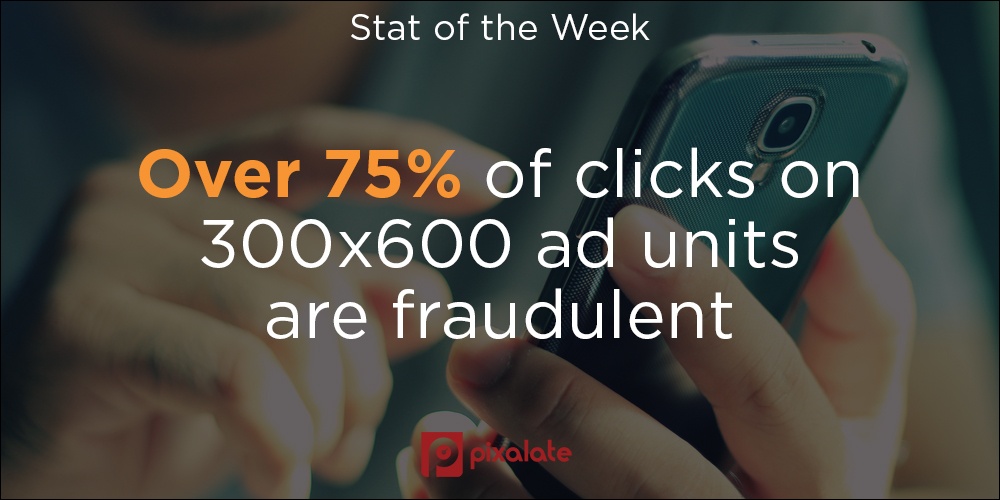
This week's review of ad fraud and quality in the digital advertising space.
Click the Stat of the Week for more information.

The Drum updated the ad industry on the state of digital ad fraud and set an optimistic tone by noting that the battle is "far from lost." The article features insights from Pixalate, which notes that "fraudsters are increasingly turning their sites on the lucrative world of video advertising."

As reported by MediaPost, The Data & Marketing Association (DMA) and MetaX have teamed to introduce blockchain technology meant to fight ad fraud. The tech "provides an encrypted, secure method for executing digital advertising transactions."

Programmatic platform TrustX features 33 big publishers who are aiming to capitalize on the fact the Google-Facebook duopoly is currently facing some transparency and brand safety struggles. TrustX is promising 100% viewability and transparency, per Adweek.

Dentsu Aegis Network has released an ad spend forecast and calls for global ad spend to reach $563.4 billion in 2017, per The Drum. Digital will lead the growth, rising to a 34.8% share of the pie in 2017, up from 25% in 2016. With digital ad spend expected to continue its rapid rise, marketers need to be aware that the ad fraud problem is not going away.

After boycotting YouTube over brand safety concerns, some major brands are back on the digital airwaves. Mashable wrote, "Nearly half of the American brands that made a show of pulling their ads from YouTube over placements on extremist videos in March have resumed advertising on the platform, according to tracking firm MediaRadar."
Sign up for our blog to stay updated with new stats, trends, and analysis on digital ad fraud.
*By entering your email address and clicking Subscribe, you are agreeing to our Terms of Use and Privacy Policy.
These Stories on Weekly Recaps
*By entering your email address and clicking Subscribe, you are agreeing to our Terms of Use and Privacy Policy.

Disclaimer: The content of this page reflects Pixalate’s opinions with respect to the factors that Pixalate believes can be useful to the digital media industry. Any proprietary data shared is grounded in Pixalate’s proprietary technology and analytics, which Pixalate is continuously evaluating and updating. Any references to outside sources should not be construed as endorsements. Pixalate’s opinions are just that - opinion, not facts or guarantees.
Per the MRC, “'Fraud' is not intended to represent fraud as defined in various laws, statutes and ordinances or as conventionally used in U.S. Court or other legal proceedings, but rather a custom definition strictly for advertising measurement purposes. Also per the MRC, “‘Invalid Traffic’ is defined generally as traffic that does not meet certain ad serving quality or completeness criteria, or otherwise does not represent legitimate ad traffic that should be included in measurement counts. Among the reasons why ad traffic may be deemed invalid is it is a result of non-human traffic (spiders, bots, etc.), or activity designed to produce fraudulent traffic.”

